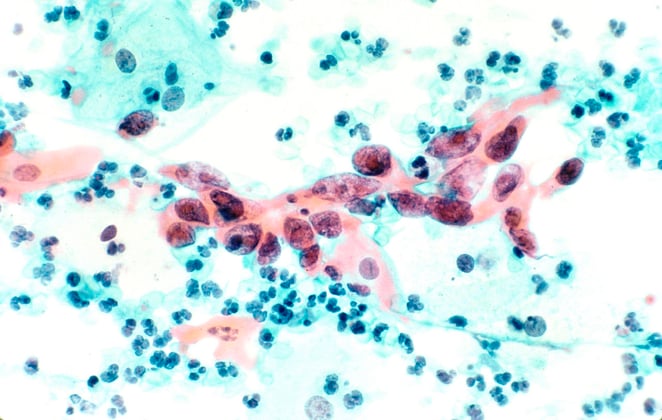January is Cervical Health Awareness Month, a time to shed light on the importance of preventing HPV disease and early detection of cervical cancer.
The UMHS Endeavour looks at the significance of cervical health awareness, HPV (Human Papillomavirus) vaccines, new information on HPV vs. Pap test screening, and what the public and students at American and Caribbean medical schools can do to help more women get tested.
Cervical Health Awareness Month
U.S. Congress has designated January as Cervical Health Awareness Month. The American Social Health Association (ASHA) says in the USA, an estimated 12,000 women are diagnosed with cervical cancer and about one third die from it.
The good news is cervical cancer can be prevented with the HPV vaccine for younger women and girls.
The HPV vaccine, available for girls and women from ages 11 to 26, is given in three doses per recommendation from the U.S. Center for Disease Control and Prevention (CDC). The vaccine protects people against four HPV types—“the two most common high-risk strains (HPV 16 and 18) and the two most common low-risk types (HPV 6 and 11),” says Healthywomen.org.
For girls, health officials recommend giving the vaccine before an infection occurs (before girls become sexually active. HPV vaccine is also being given to boys as well because it protects them against HPV-related illnesses that affect men later in life.
Getting the word out about cervical health issues is important for many reasons.
"Science has put us in a remarkable position to protect women from cervical cancer, but technology is only half the battle," said ASHA president and CEO Lynn Barclay. "It's imperative we continue efforts that not only promote greater access to health care, but that we also inform women about cervical cancer and the marvelous means we now have to prevent this disease."
Since there is a high rate of cervical cancer in the Caribbean, the UMHS Endeavour stresses the need to raise awareness outside the USA.
HPV vs. Pap Screening
First things first: Women should get screened for HPV (which causes cervical cancer and genital warts) by getting a simple urine test at their doctors.
Two medical organizations last week recommended HPV testing for cervical cancer prior to using a Pap (Papanicolaou) smear for screening, based on a clinical study published in Gynecological Oncology and two other medical journals.
Lead author Dr. Warner Huh of the Society of Gynecological Oncology and the American Society for Colposcopy and Cervical Pathology was quoted in a Reuters news wire story on January 9, 2015. Dr. Huh said although the HPV test is approved by the U.S. Food and Drug Administration (FDA), more important is "is getting accurate information to providers so they can understand the approach .
Approximately 91% of cervical cancers are caused by HPV. There is a difference in HPV and Pap tests. While an HPV test checks for the presence of the virus in a patient, a Pap test (done by scraping cells from a woman’s cervix or vagina) looks for abnormal or pre-cancerous cells.
Here are facts about HPV testing vs. Pap testing from the Reuters article:
- Last summer, a study found that the HPV test is better than the Pap test at assessing whether women are at risk for cervical cancer (see Reuters Health story of July 18, 2014 here: http://reut.rs/1xJEDou.)
- In that study, women were less likely to develop cervical cancer in the three years after a negative HPV test than after a negative Pap test.
- The new guidance, which is based on a review of 11 studies, suggests that women first be screened with an HPV test at age 25. If the test is negative, they should not be screened for another three years.
- If the HPV test is positive for HPV strains 16 and 18, the ones most likely to lead to cancer, it should be followed by a biopsy of the cervix.
- If the women test positive for other strains of HPV, they should receive a Pap test, according to the guidance.
- For women younger than age 25, the new guidance says they should follow the current recommendation for Pap testing.
Dr. Huh told Reuters that “one of the major concerns is that screening women with the HPV test in their 20s leads to unnecessary further testing because so many people in this age group will test positive for a strain of the virus.”
For the full study in Gynecologic Oncology, visit http://bit.ly/1tOs7Pu
(Top image) Cytological specimen showing cervical cancer specifically squamous cell carcinoma in the cervix. Tissue is stained with pap stain and magnified x200. Image: National Cancer Institute/Wikimedia Commons
About UMHS:
Built in the tradition of the best US universities, the University of Medicine and Health Sciencesfocuses on individual student attention, maintaining small class sizes and recruiting high-quality faculty. We call this unique approach, “personalized medical education,” and it’s what has led to our unprecedented 96% student retention rate, and outstanding residency placements across the US and Canada. UMHS is challenging everything you thought you knew about Caribbean medical schools.

Scott is Director of Digital Content & Alumni Communications Liaison at UMHS and editor of the UMHS Endeavour blog. When he's not writing about UMHS students, faculty, events, public health, alumni and UMHS research, he writes and edits Broadway theater reviews for a website he publishes in New York City, StageZine.com.















